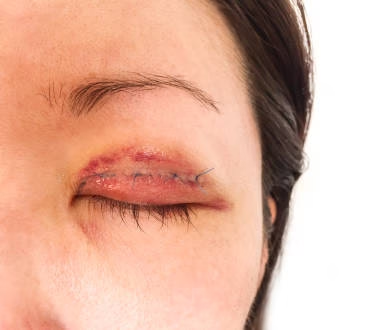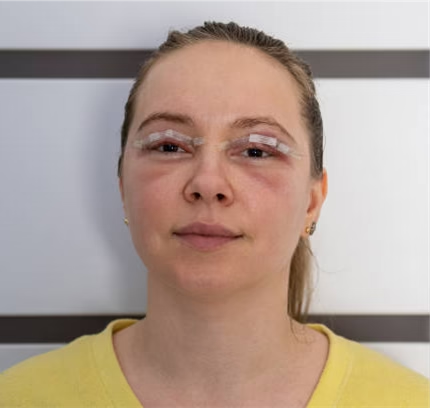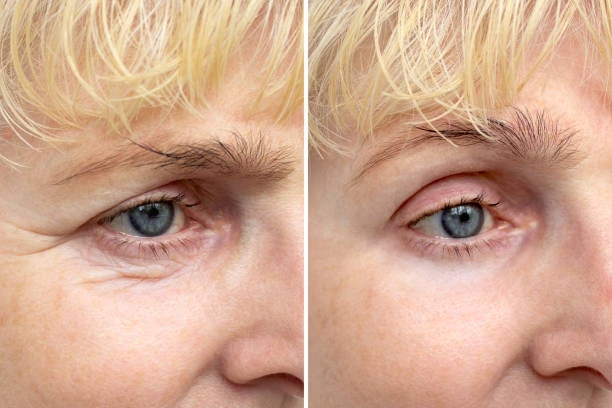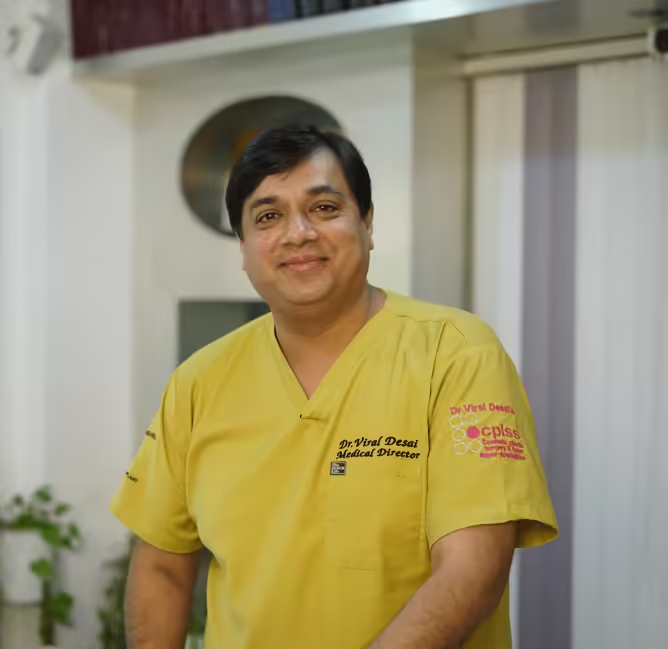“Your eyes introduce you before you even speak.”
This quote holds a special significance when it comes to appearance and self-confidence. Yet, stress, worry, and aging often leave a visible toll, especially around the eyes. Sagging eyelids, puffiness, and fine lines can create a weary or downcast look, even when you’re well-rested and energized.
Dr. Viral Desai, a well-known cosmetic and plastic surgeon in Mumbai, explains,
“The upper eyelids are particularly prone to aging, with skin losing elasticity and fat accumulating in unflattering ways. Blepharoplasty addresses these concerns, rejuvenating your eyes and restoring a vibrant look. Modern surgical techniques ensure natural results with minimal downtime, making eyelid surgery an increasingly popular choice.”
This blog offers a detailed guide about what to expect, how to manage swelling, and when to consult your surgeon three weeks after eyelid surgery.
Is it normal to still be swollen 3 weeks after blepharoplasty?

Swelling three weeks after eyelid surgery is not unusual, as healing times vary from person to person. Swelling can persist for several weeks or even months, especially if the procedure was extensive or if you have a tendency to retain fluid. Here are some common causes:
Tissue Healing: The body’s natural inflammatory response to surgery leads to swelling as it repairs tissues. This can persist for several weeks as the area adjusts and settles.
Lymphatic Drainage Issues: Post-surgery, the lymphatic system may temporarily struggle to drain excess fluid effectively, causing puffiness.
Overexertion: Activities that strain the eyes or involve heavy lifting may contribute to prolonged swelling by increasing blood flow to the area.
Sleeping Position: Sleeping flat on your back instead of elevating your head can impede fluid drainage, prolonging swelling.
Residual Bruising: Bruised capillaries under the skin might still retain fluid, which appears as puffiness even three weeks post-op.
Still experiencing discomfort or unusual swelling? Consult a proficient cosmetic surgeon to discuss your concerns and ensure a smooth recovery.
What to Expect 3 Weeks After Blepharoplasty
First Few Days:
During the initial phase, noticeable swelling and bruising are normal. Keeping your head elevated and applying cold compresses can significantly reduce discomfort. Rest and limited facial movement are crucial to ensure optimal healing.
One Week:
Stitches are usually removed at this stage, and the bruising begins to fade. Swelling remains but is less pronounced, allowing patients to resume light, non-strenuous activities. Careful attention to hygiene around the incision areas is essential.

Two Weeks:
Most bruising subsides, leaving only minor puffiness. Patients typically return to regular routines, though swelling remains prominent in the mornings. Avoid direct sunlight to prevent discoloration.
Three Weeks:
While much of the swelling has reduced, some puffiness, especially in the mornings, may persist. Mild discoloration around the incision sites is normal, as the healing skin adjusts to its new contour. A feeling of tightness may also be experienced, reflecting the skin’s adaptation to the surgical adjustments. Overall, the eyelids begin to show a more rejuvenated appearance, though final results take more time.
Reducing Swelling 3 Weeks Post Blepharoplasty
Practical Tips for Managing Swelling Include:

Stay Elevated: Sleep with your head elevated using extra pillows to promote fluid drainage.
Gentle Massage: Lightly massaging the area as per your surgeon’s advice can stimulate lymphatic flow and reduce puffiness.
Cold Compresses: Applying cold compresses can provide relief, though it’s essential to avoid direct contact with the incision.
Avoid eye-strain: Limit activities like reading, screen time, or watching TV for extended periods to prevent unnecessary eye strain and promote healing.
Hydration and Diet: Drinking plenty of water and reducing salt intake can help minimize fluid retention.
Follow Post-Op Instructions: Adhering to the post-surgery care plan ensures optimal healing and reduces complications.
Dr. Viral Desai, a prominent figure for blepharoplasty in Mumbai, states:
“Patience is key during recovery, whether you’re following a surgical or non-surgical treatment plan. While mild swelling can linger, staying consistent with post-operative care significantly speeds up healing. Trust the process, and keep in touch with your surgeon for the best results.”
Ready to reverse signs of aging and regain confidence? book an appointment today.
When to Contact Your Surgeon
Although mild discomfort is normal, certain signs warrant immediate medical attention:

Persistent Pain: Pain that doesn’t subside or worsens over time.
Unusual Discharge: Yellow or green discharge from the incision site may indicate infection.
Sudden Vision Changes: Blurred or double vision requires urgent evaluation.
Excessive Redness or Heat: These could be signs of an infection or inflammatory response.
Dr. Viral Desai, a skillful cosmetic surgeon in Mumbai, cautions:
“Ignoring symptoms like excessive redness or pain can delay recovery and lead to complications. Always err on the side of caution and consult your surgeon promptly.”
Noticing any unusual symptoms? Don’t delay—consult a reliable cosmetic expert to address your concerns promptly.
Enhancing Recovery: A Final Word
Your eyes do more than see—they resonate with emotion and enhance your facial harmony. Blepharoplasty offers a transformative way to refresh your appearance, but the recovery process is equally important.
Dr. Viral Desai, a go-to cosmetic surgeon for Eyelid Surgery in Mumbai, assures:
“Every patient’s journey is unique. Rest assured, with proper care and guidance, the results will be worth the patience. My team and I are here to support you at every step, ensuring a seamless recovery and the best possible outcome.”
Frequently Asked Questions
How long does it take to see final results after blepharoplasty?
Can I wear makeup 3 weeks after eyelid surgery?
It’s generally safe to apply makeup after 3-4 weeks, but ensure your incisions are fully healed and use hypoallergenic products. Avoid applying makeup too close to the incision line to prevent irritation. Consulting your surgeon for specific recommendations is always a wise step.
Is it normal to feel tightness around the eyes?
Can I exercise 3 weeks post blepharoplasty?
Will scars be visible after blepharoplasty?
Have more questions about eyelid surgery? Consult a skilled cosmetic surgeon to gain clarity and make informed decisions.
Reference Links:
https://www.mayoclinic.org/tests-procedures/blepharoplasty/about/pac-20385174
https://www.mskcc.org/cancer-care/patient-education/instructions-care-after-blepharoplasty
Disclaimer: The information shared in this content is for educational purposes only and not for promotional use.


